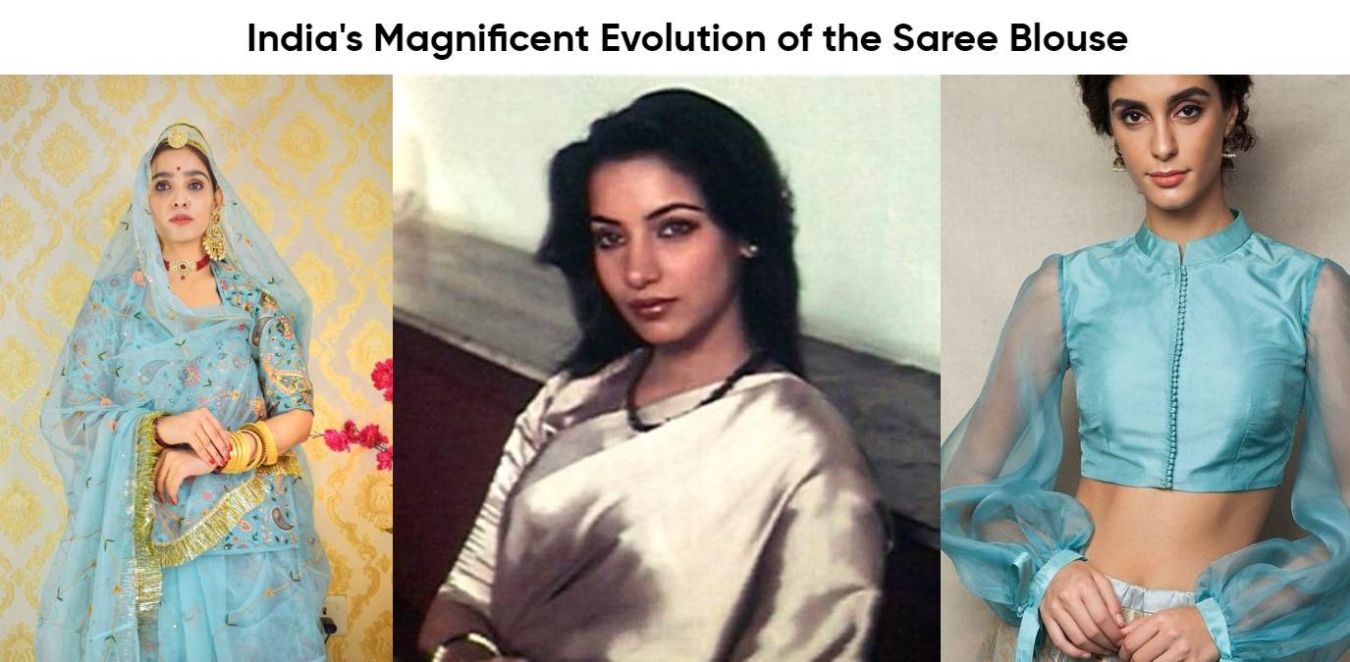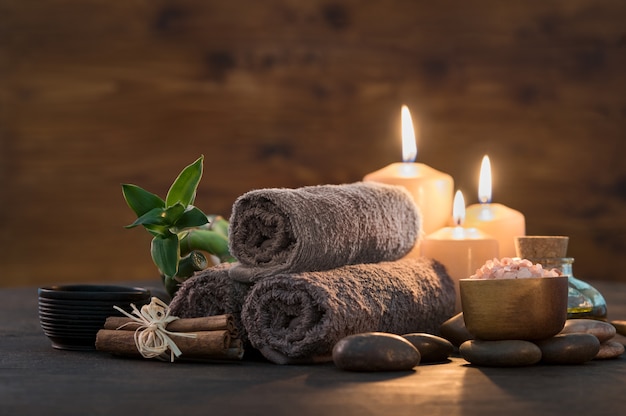India's Magnificent Evolution of the Saree Blouse
In modern India, blouses worn with saris are derived from the traditional choli, which grew out of Mughal and Western influences. Sari blouses also sprang into popularity after the adoption of the British modesty regulations during the colonial era, after the Christian missionaries, after the social reformers, and after the freedom movement.
Stitched and unstitched clothes may be seen in a variety of styles in India due to ethnic and geographical variances. Women on the Indian subcontinent wear saris, which are draped with unstitched clothes. The sari consists of an underskirt, also known as a petticoat, and a short-fitting top, known as a blouse. A choli is the most often used vernacular name for a blouse. They are also called ravikalu in Andhra Pradesh, ravikkai in Tamil Nadu, and kuppas or kupsa in Karnataka.
Here Is An Interesting Journey We're Going To Take You On:
How Did The Ancients Wear It?
The earliest version of the saree can be traced back to the Indus Valley Civilization, which is the history of clothing in the region known as India. They determined that women's and men's clothes largely consisted of two unstitched fabrics based on sculptures and figurines from the period. A rectangular piece of fabric is draped over the lower bodies of both men and women, and another rectangular piece of cloth is draped over their upper bodies.
The Evolution Of A Blouse
There has been some debate about when stitched clothing was first introduced and when women first wore the upper garments in India, so the origins of the choli are uncertain. Different historians have put forward different theories as to when stitched clothing first emerged.
A breast band, which was a piece of cloth that covered the breasts and was fastened across the back, was initially used as an upper garment. Other names for it include pratidhi, stanamshuka, stanottariya, and uttarasanga.
The earliest known form of the modern saree and blouse ensemble derives from Sanskrit and Pali literature dating from the 6th century B.C.
It includes
- the Antriya, or lower garment;
- the Uttariya, or veil; and
- the Stanapatta, or chest band.
This clothing was called "poshak," which means "clothes or ensembles."
According to BN Goswamy, stitched-fit top garments were introduced in about the 2nd century BCE with the arrival of alien tribes like the Kushanas and Sakas. Kushana is recognized in several publications on Indian costume history as a highly important time in the history of clothing since it heralded the beginning of cut-and-sewn clothes among Indians in the north.
In his book Indian Costume, Coiffure, and Ornaments, author S. Sahay states that women in the Kushana period wore tunics, not bodices, as depicted on the coins of the period. According to history, cholis originated in the Gupta period from the Ajanta paintings, which serve as an important reference for the design of women's costumes.

Image of Poshak
Different Regions Have Different Customs
Women did use knotted fabrics to cover their chests, but it was not a standard practice. Depending on the regional customs, class, or even climate, people might still choose to use the Stanapatta or not.
Various influences from invading cultures that came from the north influenced the use of Stanapattas as well.
According to sculptures and paintings, tightly stitched bodices, blouses, or cholis developed from the 2nd century B.C. to the 6th century A.D. in many regional styles.
It was at this point that the two separate upper and lower garments came together in that which is perhaps the origin of the saree as we know it today.
The Medieval Period's Impact on Indian Clothing
In India, the stitched blouse was introduced with the arrival of Muslims. Women's costumes in northern India were characterized by a short bodice during the medieval period. Various Mughal paintings from the 16th century show women wearing backless cholis with tie-cords fastened to the back.
During this period, ladies are seen in Kangra or Rajput-style paintings wearing stitched blouses or cholis with broad skirts called ghasharas. Women wearing sarees are also seen in a tiny artwork from the same time period from the Deccan. However, they are dressed in blouses with V-necks and elbow-length sleeves in colors other than those of their sarees.
An expert in sociology and literature, Vinay Bahl, told me in an interview that Indian women wear "ungia" in the north and "choli" in the south. Ungia is a cup-shaped piece of fabric that encloses the breasts, sewn together at the hemline and tied around the back, whereas choli is a fabric strip that surrounds and ties just below the breasts. Until the 20th century, women in Orissa, Bengal, and the extreme South wore sarees without blouses, as shown by literary and visual sources.
In the early days of the Portuguese presence in India, European and Christian cultures encountered Indian customs and practices.
Victorian standards of morality and propriety became more apparent during the time of British rule. The increase in their exposure to public life accelerated their participation in public life, access to education, and socializing opportunities for Indian women.
The difference in perceptions of what constitutes a proper dress code for women in public life stemmed from these issues.
The Emergence Of The Modern Saree Blouse
After the British came into power, Indian women began wearing blouses and petticoats with their sarees. In order to comply with British women's dressing styles, new rules of modesty were established. According to missionaries and social reformers, the changes in women's clothing are a result of colonial influence.
There have been many changes to the attire, such as variations in the saree drape, the addition of a petticoat underneath the saree, and blouses with lace edging gathered trims, collars, and puffy sleeves, which are similar to English blouses.
This blouse and saree combination as well as its styling reveals how much the British influenced Indian women's clothing. "Blouse" was a term applied by Indians to upper garments during the early 19th century. French influence is evident in its usage.
Under the influence of European culture, the Parsi community was believed to be the first to adapt long-sleeved collared blouses and petticoats.
The Influence of Western Fashion on Indian Women
Indian women's silhouettes and corsets were strongly inspired by Western fashion in the late nineteenth and early twentieth centuries. Satin blouses with flounced necklines, cuffed quarter sleeves, and embroidered lace were worn with sarees.
By adding Zardozi embroidery around the neckline and sleeves of the blouses, people were imitating traditional jewelry like the multilayered rani haar necklace and the baajuband bracelet. It was not long before educated girls in Bombay and Calcutta began wearing Western-style blouses.
When Did The Concept Of The Blouse Become Popular?
Most Bengali women during the Victorian era did not wear blouses under their sarees but wore them bare-breasted. Covering the breasts was more of a caste issue in some parts of India than a matter of propriety. Who brought the blouse to India, the most essential paraphernalia of the saree?
In 1942, Jnanadanandini Debi, wife of Satyendranath Tagore. The first Indian to enter the Indian Civil Service and the brother of Rabindranath Tagore. She was influenced by the Parsi ladies of Bombay and introduced the Nivi style. A forerunner of the modern-day sari drape, matched with a shirt and petticoat.

Image of Shabana in Arth
The blouse has become so popular in India that it is considered part of the tradition. It is probably Britain's longest-running export. Although there is a growing interest in seeing brands like Raw Mango introduce anti-fit blouses that attempt to make the saree more wearable, they tend to be more similar to the Victorian counterpart than the Indian choli. Ironically, designers like Elie Saab, who created a collection in which an Edwardian dress is layered with a sari-like stole, claim India to be their inspiration.
What Made The Saree And Blouse Universal In India?
The saree and blouse, paired with a petticoat, had become the ubiquitous clothing of Indian women by the early twentieth century. According to Ritu Kumar, a notable designer, women's rising engagement in social and political spheres is resulting in a range of garment patterns for blouses and jackets.
The early twentieth century saw the introduction of a vogue for sleeveless blouses matched with chiffon sarees by royalty and renowned ladies of the time.
In the Indian liberation movement, saree blouses were replaced with basic, loose-fitting clothing made of khadi rather than foreign textiles. As khadi became a favorite fabric among female combatants. Due to the popularity of Indian films among the public in the 1940s, the saree blouse experienced alterations.
Because of the era's short blouse length. Many celebrities and famous people wore short puff sleeves, exposing even more of their midriffs. Following independence, there was a wide range of saree blouse styles based on the textiles used. They are the length of the sleeves, the method of attachment, and the type of cloth. Female fashionistas may select from a range of necklines, including halter necks and noodle straps, as well as various lengths of sleeves and even leather. Lace, georgette, knits, and brocades are just a few of the textiles available.
The Biggest Influence On Indian Fashion Was And Still Is Cinema
Maharani Gayatri Devi made satin blouses with 10-inch sleeves extremely popular during the pre-independence era. Amrita Sher-Gil was known for making sleeveless blouses during that time. Amrita Sher-Gil was known for sleeveless blouses at the time. As a result of the success of Indian films in the 1940s, a number of sartorial trends emerged. Resulting in the rise of the costume and fashion industries.

image of the Mumtaz saree
Blouse Style in the 1940s to 1980s
During the 1940s and 1950s, short puff sleeves and V-neck blouses with elbow-length sleeves were enormously popular. The 1950s introduced fitted blouses with a variety of necklines, from boat necks to sweetheart necklines with 3/4th sleeves.
In the late 1960s and early 1970s, short blouses that showed off a hint of skin became quite popular, including sleeveless tops and plunging necklines.
In the 1970s and 1980s, sleeve length was experimented with, from cap sleeves to full sleeves. During this time, plain, monotonous blouses were worn with chiffon sarees.

image of Rekha wearing a saree and blouse in silsila movie
Blouse Style in the 1990s
In the 1990s, Indians became more aware of western influences and their brands. These influences can be seen in the wide variety of blouse styles popular during this time. From off-shoulder and backless styles to halter necklines.
With a rising number of designers and stylists dressing Hindi film heroines. Some designs became more popular, and many new ones appeared throughout the next decade. During this period, elegant and embroidered blouses ruled fashion.

Blouse Style in the 2000s
Several blouse styles returned during this decade. They can also be called the recycled era: elbow sleeves, relaxed crop tops, high necklines, plunging sweetheart necklines, and others. Even though some styles from a timeless era have remained popular, like cold shoulder blouses and saree gowns.
A blouse's design is influenced by a number of things. A bride's blouse is considered the most personal and one-of-a-kind piece of clothing she will wear on her wedding day. The bride's blouse is frequently created to match her body form, saree colors, and occasionally even her wedding theme. Few brides haven't made their blouses even more personal by embroidering their names and infusing them with their love tales.

image of wedding blouse with spouse's name on it
The result was the liberation of white women from corsets in Europe. While Indian women were regulated by their standards of decency and public decorum, which they had not previously considered.
In a country like ours, where so-called nationalists determine a woman's character based on her adherence to tradition. The genesis of this shirt exemplifies how deceptive conceptions of tradition and culture can be!
Image source: Pinterest







